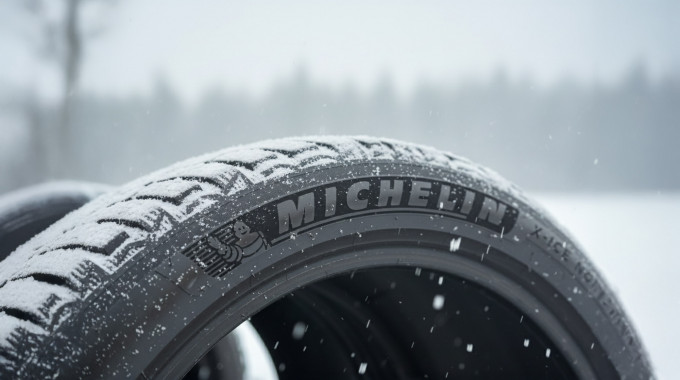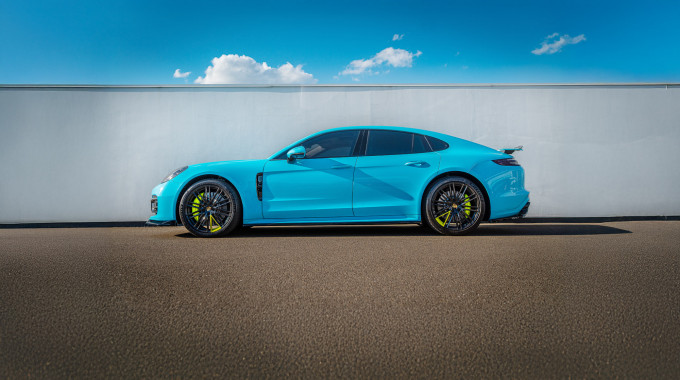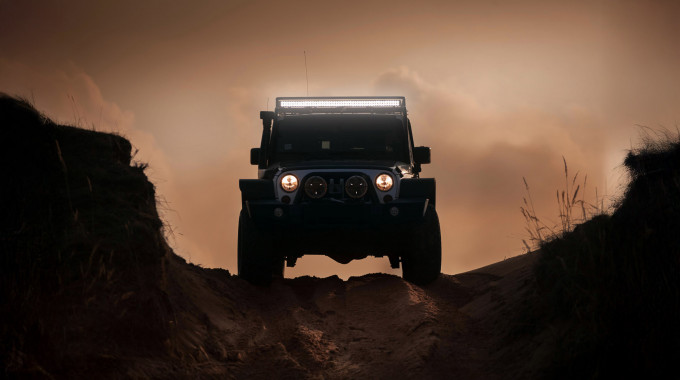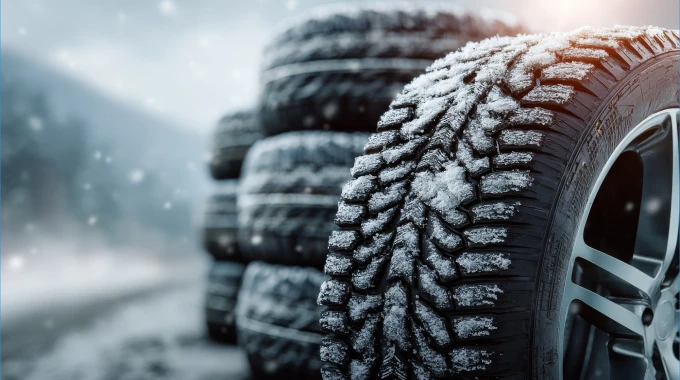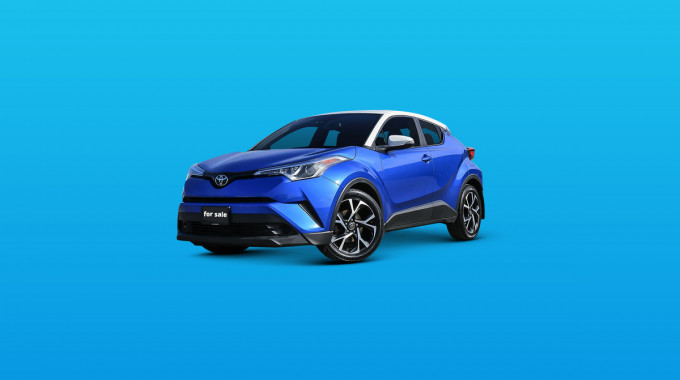
Buying a Used SUV: Full Guide & Key Things to Consider While Shopping
If your next vehicle will be a used SUV, you’re a completely normal Canadian. SUVs are big business these days, and along with pickups, make up about 90 percent of the new vehicles sold in Canada.
The SUV has been all the rage for some time, meaning the used SUV marketplace is also full of compelling options to consider for your dollar. Whether you’re considering a sensible Ford Escape, a luxurious Mercedes GLC, a capable Jeep Grand Cherokee or an affordable Nissan Kicks, options are abundant. Not to mention larger, 7-seater SUVs like these 10 top models.
Below, let’s get you up to speed with some useful facts, checks and considerations to bear in mind as you start shopping for that used SUV, to help you find the best unit possible for your dollar.
SUV vs CUV – what’s in a name?
Let’s sort out some nomenclature.
The Sport Utility Vehicle (SUV) name was originally given to large, truck-based 4x4 models, while the Crossover Utility Vehicle (CUV) (sometimes called Crossover SUV) was reserved for smaller machines with more car-like construction. Complicating things further, some automakers sought to create their own definitions, like BMW’s Sports Activity Vehicle.
Confused yet?
Don’t be. The terms are interchangeable. Whether it’s a CR-V, X5, CX-5 or XC90, you can call it a crossover, an SUV, a CUV, a sports ute, or just about anything else you like. Your favourite search engine will know what you mean.
What is the most reliable used SUV?
The most reliable used SUVs tend to be the ones that have been the most strictly maintained, regularly dealer serviced, and properly cared for by their previous owner(s).
Maintenance records over brand name
Remember that the badge on the vehicle’s grille is not a guarantee that the vehicle in question is healthy. Also, remember that as vehicles age, their long-term health and lifespan becomes more dependent on how they were cared for and maintained than the company that built them.
It’s important to make some careful and specific checks as you test-drive a used SUV, in order to help ensure the specific unit you’re considering is in excellent shape and not concealing any potentially-pricey trouble.
These dependable SUV brands top the list (for now)
In recent years, J.D. Power and Associates has ranked brands including Porsche, Lexus, Toyota, Buick, Genesis, Kia and Hyundai as tops when it comes to dependability. According to the annual Vehicle Dependability Study (VDS) results from the past several years, surveyed owners reported the fewest problems with vehicles built by these automakers.
To create the VDS, thousands of owners of three-year-old vehicles are surveyed extensively, and the results generate a ranked list of the most dependable brands. To summarize the above: if you’re shopping for a few-year old SUV, a well-maintained model from one of the brands above is a great place to start.
Where can you buy a dependable, used SUV?
The best place to start shopping for a used SUV or crossover is here at Canada Drives – shop our inventory here. All our vehicles go through a 150 Point Inspection, comes with a no-charge 30 Day / 1,500 km warranty, a free CARFAX report, and is covered by our 7-Day money back return policy – so hit the road and spend a week with our vehicle to ensure you’re completely happy.
Start with common SUV problems
According to other VDS data, the most commonly-reported problems with modern used cars tend to be electronic and not mechanical in nature – and often centred around the vehicle’s advanced safety features and (especially) infotainment system.
Make sure to test out the infotainment, touch-screen, navigation maps, and other electronics
On your test-drive, work the infotainment touch-screen and controller of whichever vehicle you’re considering through its paces. Access and manipulate all menus, confirm proper operation of the steering-wheel mounted controls, and connect and pair various Bluetooth and USB devices, confirming adequate functionality and audio quality.
Check the navigation system for outdated maps, and confirm that the vehicle you’re considering has an adequate number of charging ports within reach of each seating position.
Note that a fresh and healthy battery can make vehicle electronics more reliable, and that the latest software updates can help ensure maximum reliability from your new infotainment system. A vehicle that’s been regularly dealer serviced is likely to have updated software installed to fix infotainment system trouble, if the vehicle’s owner reported any.
These steps can help reveal commonly-reported problems, which could save you a headache.
Transmission trouble
You should plan to carefully check the transmission in the used SUV you’re considering, to reveal trouble signs that could be evidence of some commonly-reported problems.
A frequent headache-generator for many SUV owners is the transmission. Complaints often involve rough or clumsy shifting, slow response, or a certain unwanted vibration, clunk, or slam that pops up in a certain situation.
Often, the fix is a simple software update. Still, sometimes these trouble signs can be evidence of a more serious and pricey problem.
On your test-drive, be sure to work the transmission at light, moderate and full throttle, confirming smooth and quick gear shifts in both directions, and adequate throttle response. At any sign of clumsiness or harshness, have the vehicle seen by a professional before you buy or move to another unit.
Take vibrations or pulsating sensations from the vehicle seriously. Sometimes, a vibration that appears at a certain speed has a simple and cheap fix. Other times, the solution may require updated software, parts, or both. A professional technician should investigate any concerns you have, before you buy.
By focusing on the operation of the transmission in the SUV you’re considering and working it in a variety of situations, you can coax out potential warning signs which could save you money.
Power tailgates and sunroofs
Two of the most common features across all SUV’s today are power tailgates and panoramic sunroofs. These two features are a common source of sometimes-serious trouble across a wide range of models, as reported by a relatively small number of owners.
Translation? Although the sunroof and power tailgate in the SUV you’re considering are probably fine, a few quick checks can help make sure there are no unpleasant surprises waiting after you sign the cheque.
Open and close the power tailgate from all possible switches or buttons, including the tailgate itself, and the remote keyfob. Work it several times, confirming that it opens and closes fully and without stopping, reversing direction, or failing to latch properly.
Sometimes, a wonky power tailgate can be corrected with a slight adjustment to its latch. Other times, there’s a problem with hardware in the system, like the electric motor, which could cost hundreds to fix.
If there’s a problem with the power tailgate in the used SUV you’re considering, you’ll want to know about it, and how much it’ll cost to fix, before you buy.
Perform this quick, 2-minute sunroof test to determine water leaks
Whenever you see a sunroof in a used vehicle, there’s a two-minute test you’ll want to perform automatically which can reveal one of the most undesirable car problems there is: a water leak.
Remove the cover from the vehicle’s cargo floor area, spare tire provisions, and any surrounding trim. Access the bare metal surface in the very lowest part of the SUV’s body, typically its spare tire well. Look for standing water, rust, mould, or moisture in this area. If it’s not dry as a bone, proceed with caution.
Elsewhere, remove all floor mats and inspect all carpeted surfaces for dampness by pressing your hand into the floor. Pay close attention around the outer corners of the carpeting, and to the area where the carpet meets the front firewall.
A vehicle with a water leak will often have dampness in these areas. If you detect any, moving to another vehicle is likely best. Sunroofs aside, other sources of water leaks include rear windows, brake lights, and roof-rails.
Water leaks can cause rust, electronic system damage, mould, and reduce the resale value of your SUV down the line. Buying a used SUV with an undiagnosed water leak is strongly not advised.
Should you buy a hybrid SUV?
Probably.
Hybrid SUV’s perform better and use less gas. They’re more responsive to drive, offer more torque, and deliver a lower fuel bill and fewer refuelling stops on longer trips.
When considering a used hybrid SUV, remember that hybrid batteries are covered for at least 8 years by the manufacturer warranty, with some automakers offering up to 240,000 kilometres of coverage.
A used hybrid SUV may be more expensive to buy than a non-hybrid, but uncertain fuel costs and an increasing interest in electrified vehicles can translate into higher future resale value than a thirstier, non-hybrid model.
Here’s our list of the 10 Cheapest Hybrid Vehicles (PHEV) in Canada for 2022 – nearly all of them SUVs and crossovers.
Avoid this one used SUV feature
Unless you absolutely have to have it, avoiding a used SUV with an adjustable air suspension system is a good idea. Air suspension systems are usually found on higher-end models with above-average off-road or performance capabilities. Air suspension is designed to raise or lower the vehicle’s ride height automatically, or at the touch of a button.
Pass on the air suspension system, especially in Canada
After years of researching used cars, air suspension systems have often come up as serious pain points for owners as parts wear down, leaks appear, and expensive repairs result. In cold climates, owners report additional problems with freezing and failure.
Some owners report trouble, many do not. Still, given the high potential of future headaches and pricey repairs, avoiding a model with air suspension is likely best.
Maintenance matters
Your used SUV’s warranty doesn’t cover wear or damage caused by a failure to maintain the vehicle properly – and if the previous owner put the vehicle’s warranty in jeopardy by skipping or stretching maintenance intervals, you’ll want to know about it before you buy.
If you’re buying a used SUV with some portion of its factory warranty remaining, be sure to confirm that all servicing and inspections are up to date by checking the service schedule in the owner’s manual against available service records.
During ownership, remember two important facts to prevent commonly-reported headaches.
First, never disconnect your SUV’s battery without consulting an expert first. In some vehicles, disconnecting battery power without taking proper precautions can unleash a torrent of frustrating problems with vehicle electronics.
Second, always have the transmission serviced in a dealer setting. Numerous owners have voided transmission warranties and even caused extensive transmission damage by performing a transmission fluid change without the proper fluid, equipment, or skills.
Bumpers and windshield
Chances are, the SUV you’re considering has a number of advanced safety features that help it keep you and your family safe. Many of these features are powered by cameras and sensors mounted in various locations on the SUV– most commonly, in the front bumper, rear bumper, and behind the windscreen.
It’s important to check the used SUV you’re considering for damage in these areas. Even slight damage to a front or rear bumper can negatively affect the operation of sensors within, which can cause errors with various safety systems or take them offline completely.
A cracked windshield may cause similar problems with camera-based systems, and replacing a windshield in a vehicle with systems like these may be more expensive.
In this way, buying a used SUV with no current or previous bumper or windshield damage can help fend off trouble with high-end safety features.
Best used SUVs to buy in Canada
We’ve written some past articles highlighting great, used SUV and crossover options spanning various years. Below is a good place to start if you’re just starting out and researching your used sport utility options:
-
10 Best Used SUVs To Buy (2016 to 2020)
-
The Best 5 Used SUVs in Canada in 2019
-
The Top 4 SUVs of 2015
-
Best Used Minivans [2009 to 2021]: Our 5 Top Choices



